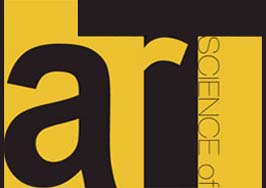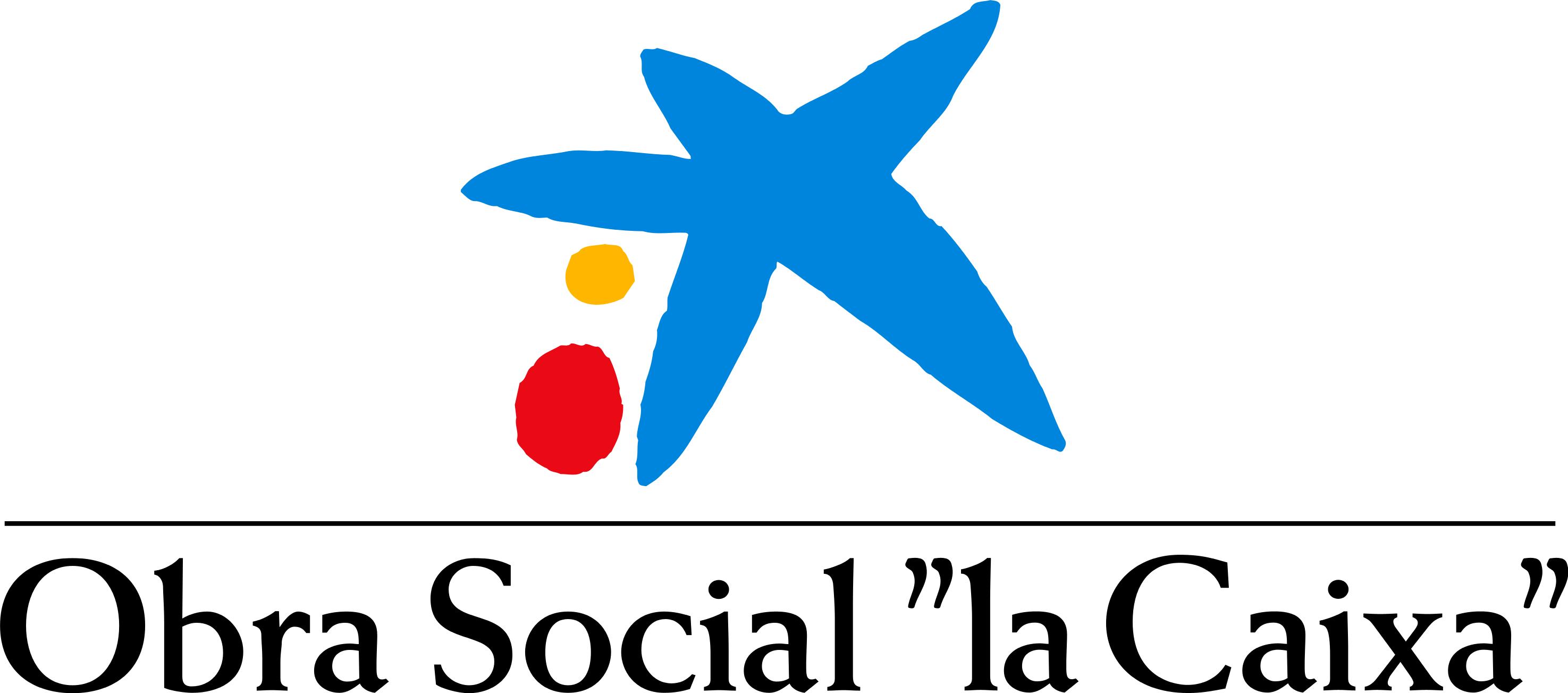Menu
VSAC Posters
The Visual Science of Art ConferenceBarcelona 26-28th of August 2016 |
 |
 |
Saturday the 27th of August - Agora Room, L-2, CosmoCaixa (Science Museum)
- How to Make Partly Invisible Objects. Kokichi Sugihara, Meiji University.
- High entropy of edge orientations characterizes artworks from different cultural backgrounds. Anselm Brachmann1 & Christoph Redies2, University of Jena School of Medicine1 & University of Jena2.
- New areas within the image and image thinking: The artist’s perspective. Patrick Ceyssens, University Hasselt.
- Beyond humans? Emulating a morally and ethically unaware android. Ramiro Martin Joly-Mascheroni, City University, London.
- Aesthetic stimuli stay in memory. Bettina Rolke & Elisabeth Hein, University of Tuebingen.
- Mors certa kitsch incerta: How does mortality salience affect kitsch judgements? Stefan A. Ortlieb, Fabian Gebauer & Claus-Christian Carbon, University of Bamberg.
- A 3D printed reconstructing of a paintings original size: showing the original size of Saul and David, by Rembrandt Willemijn Elkhuizen, Delft University of Technology.
- Aesthetic preferences for unfamiliar faces are modulated by a combination of dynamic social cues Pik Ki Ho, Trinity College Dublin, The University of Dublin.
- New areas within the image and image thinking: The scientist’s perspective. Johan Wagemans1, Yane Beckers2 & Patrick Ceyssens3, University of Leuven (KU Leuven)1,2 & University College Hasselt3.
- Attractiveness of human body and fluency of gender categorization. Slobodan Marković & Tara Bulut, University of Belgrade.
- Capturing the intangible: M5oX―A multi-dimensional toolbox for measuring dynamics of aesthetic experience. Marius Hans Raab, Claudia Muth & Claus-Christian Carbon, University of Bamberg.
- The mystery of orientations in abstract paintings – an experimental study of preference. Johannes Zanker, Rachel Harding & Cerys Simpson, Royal Holloway University of London.
- Photographing art: An experimental and naturalistic investigation into the effects of photo-taking on memory. Caitlin Mullin1 & Johan Wagemans2, MIT1 & University of Leuven (KU Leuven)2.
- Individual Differences in Artistic Capture of Peripheral Appearance. Tilde Van Uytven1, Erik Myin2 & Bilge Sayim3, Royal Academy of Fine Arts, University of Antwerp1,2 & University of Bern3.
- Facial fixations: how visual exploration varies across artistic depictions of faces. Jeff MacInnes1, Marianne Eileen Wardle2 & Elizabeth N Johnson3, Duke University1,3 & Duke University, Nasher Museum of Art at Duke University2.
- On the perception and production of drawings and graffiti tags. Frederic Fol Leymarie1, Prashant Aparajeya2, Daniel Berio3 & Ilona Kovács4, Goldsmiths, University of London1,2,3 & Institute of Psychology, Péter Pázmány Catholic University4.
- On the role of perceptual challenge in aesthetic stimuli. Sabine Albrecht, Claudia Muth & Claus Christian Carbon, University of Bamberg.
- Effects of prior walking context on the vection induced by different types of global optic flow. Takeharu Seno1, Stephen Palmisano2 & Shinji Nakamura3, Kyushu University1, Kyushu University, University of Wollongong2 & Nihon Fukushi University3.
- Making demo-movies of various vection stimuli. Emi Setoguchi & Takeharu Seno, Kyushu University.
- Classification of Expertise in Photoediting based on Eye Movements. Tandra Ghose, Kartikeya Karnatak, Thomas Morris & Yannik Schelske, University of Kaiserslautern, Germany.
- Visual preference and approach response for smooth curvature. Letizia Palumbo & Marco Bertamini, Liverpool Hope University, University of Liverpool.
- Why do artists depict hands smaller than their actual size? Nicole Ruta, Alistair Burleigh & Robert Pepperell, Cardiff Metropolitan University.
- A Tri-Level Explanation to Reconcile Competing Accounts of Picture Perception from the Visual Arts and Cognitive Neuroscience. Peter Coppin, Ontario College of Art and Design University, University of Toronto.
- The influence of graphic long-term memories and attentional priming on drawing accuracy. Neil Harrison & Simon Davies, Liverpool Hope University.
- How artists depict equidistance in perspective paintings and engravings. Casper Erkelens, Utrecht University.
- It Matters Whom You Paint – Gender Differences in Art Portraits. Jana Katharina Schulz & Gregor Uwe Hayn-Leichsenring, University Hospital Jena.
- Examining the Mere Exposure Effect in Dementia patients using recreational tasks. Fatima M Felisberti, Kinga Zyto, Shahnaz Akhtar & Oded Be-Tal, Kingston University London.
- Colour Preferences Differ According to Object Context and Gender. Domicele Jonauskaite, Christine Mohr, Jean-Philippe Antonietti, Laetitia Chèvre & Nele Dael, University of Lausanne, Switzerland.
- The effect of art appreciation education on aesthetic impression of paintings. Masahiro Wakabayashi1, Tomoyuki Naito2, Noriko Fuku3 & Hiromichi Sato4, Osaka University1,2,4 & Kyoto University of Art and Design3.
- Sketching the 'Strange-Face-in-the-Mirror' Illusion. Ute Leonards & Catherine Lamont-Robinson, University of Bristol.
- Forming Hypotheses in Categorization Research by means of the Process of the Perception of and Interpreting Works of Art. Anna Losonczi DLA2, Anett Ragó3, Klára Sarbak4, Attila Kurucz5, Levente Gulyás1, Júlia Losonczi6, Miklós Oroszlány7, András Gyökér8, Dániel Szabó, Sonit Bafna9 & Andrea Dúll10, Ginkgo-Green Architects, Budapest1,2,4,5,6,7,8, Hungarian Academy of Sciences2 , Department of Cognitive Psychology, Eötvös Loránd University, Budapest3 , School of Architecture, Georgia Institute of Technology, Atlanta9 & Department of Economic and Environmental Psychology, Eötvös Loránd University, Budapest10.
- On which parts of the beautiful painting do I look longer and more carefully? Piotr Francuz, The John Paul II Catholic University of Lublin, Institute of Psychology.
- Fractals: Converting 3D formula to artworks. Kazim Hilmi Or, Eye Surgeon Private Office.
- Is she looking at you? The effect of distance (and memory) on Mona Lisa’s gaze. Daniele Zavagno, Christine Stivanin, Olga Daneyko & Natale Stucchi, University of Milano-Bicocca.
- The influence of illumination on perception of works by Jan Schoonhoven. Maarten W.A. Wijntjes1, Susan F. te Pas2, Marga P. Schoemaker3, Sylvia C. Pont4, F. Zhang5, T. Kartashova6 & C. van Middelkoop7, Delft University of Technology1, Perceptual Intelligence Lab, TU Delft, Helmholtz Institute, Faculty of Social and Behavioural Sciences, Utrecht University2, Museum Prinsenhof, Delft3 & Perceptual Intelligence Lab, Faculty of Industrial Design Engineering, Delft University of Technology 4.
- The impact of drawing instruction on perceptual abilities in training artists. Rebecca Chamberlain, KU Leuven.
- Self-portraits, side biases, and lateralized expressiveness: New evidence from the updated SelfieCity database. Nicola Bruno1, Vera Ferrari2 & Lev Manovich3, Università di Parma1,2 & CUNY3.
- Angular versus Rounded shapes: aesthetic preferences and non-arbitrary correspondences. Olesya Blazhenkova & Melisa Maya Kumar, Sabanci University.
- Photogenic Cranes – An Analysis of Bird Photography. Claudia Menzel & Gregor Uwe Hayn-Leichsenring, University Hospital Jena & Institute of Anatomy, University Hospital Jena, Germany.
- Fascination of autumn foliage illuminated by LED lighting. Shino Okuda, Doshisha Women's College of Liberal Arts.
Art Exhibition: From Friday the 26th of August to Sunday the 28th of August - Agora Room, L-2, CosmoCaixa (Science Museum)
Participants:
| Patrick Ceyssens: | Hopping, deepstepping and introporting in time and space #1 |
| K. Hilmi OR: | Pop up exhibition |
| Kokichi Sugihara: | Ambiguous Cylinders: Objects That Change Drastically in a Mirror |
| Arturo Espinosa: | Four portraits |
| Lynsey Ferguson: | Lenticular |
| Leon Lou: | Self-‐portrait and self-‐map |
| Ramiro Joly-Mascheroni: | Humanoid Android |
| Lorentz Potthash: | Deaccelerator Helmet |
| Ciruelo: | Fanstastic Landscapes + Petropictos |
The full programme can be downloaded from here



